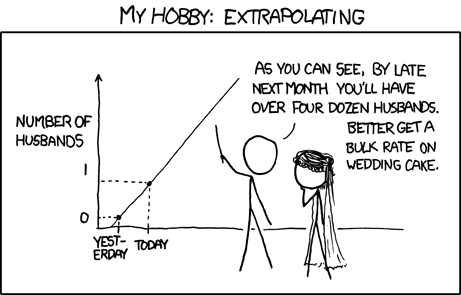Maybe they could order an extra dozen brake pads. Personally I have no idea how any of this works.
[Brand] = Premium brand ( edited for avoid confidential legal problems )
I have, or at least, i'm working on a software for [BRAND] about the replacement part so i know a thing or two about 'how it works'.
The base "problem" is that Tesla do an extensive upgrade of the car every couple of days editing some parts etc ( from what elon said times ago they change hundreads of part every week if i remember correctly ) a thing that other manufacturer don't do. Said that they produce in-house more than every other automakers ( vertical-integration ) so it's a normal thing to have problem with supply since they need to produce them and stock them ( they have space problem, if i remember correctly they are builing a multy-level storage for that ) wich of course it's harder to do if you have all-in-line machines.
Said that, all manufacturer use different part for the manufacturing and the replacement since they usually use pre-assemblated part ( like, caliper+brake etc ) since they don't really need the 'single part' and so they don't order it, and if i understood correctly what [BRAND] told us usually when something broke or malfunction during the legale warranty they are legally obligated to replace all part of it ( in this case the caliper is in ).
So, since you have the 'code' of the pre-assembled part in your "what's inside this specific car" ( and remember, they need to know every damn car they produced based on the vin since again, you make incremental changes every week - a thing that [BRAND] does, but not [OTHER BRAND] for example, [OTHER BRAND] work like this: "this car was produced this week, to this must be the part we put inside" ), in this case you need to "de-assembly" the part ( virtually of course ) and "name" the single piece that the pre-assembled piece is made of, then you start thinking "it has some meaning that we sell this single piece de-assembled? in how many pieces we want to sell it?" of course this need to be decided every time and of course has some implication about the intercambiability of the parts, if you de-assemble too much ( put like it: you changed something and the new piston doesn't work well with the old one, in this case you need to replace the whole assembly ).
This is a really ( really! ) time-consuming thing to do ( in [BRAND] this is half-done by them, and half-done by the organization i work with ) since of course you really,really, need to be sure there is no problem with the "new" part and the new part is really perfectly compatible.
It has sense, for now, that they keep only the pre-assembled brake kit with the caliper since they don't expect to change the pad since it's easier to stock, it's easier to replace, and doesn't need the work of de-asssmbly and check.
Yes, it's silly, it's more costly, but you need to understand that:
- The space needed for the replacement part has a maintanance cost
- Some part may be "useless" after a time ( regulation changes, the part get's old etc ) so you loose money if you don't spend it
All of this just to say: it's not so easy as it seems, and of course Tesla should do better and need to do better, but other manufacturer keep stock in different country and the dealer keep a stock themself for some common part since they standardized much of it, so a brake pad works well for more than a model etc. this is translated in a more stock cost and of course it result in a fastest response
About the VIN: you can order some spare part for [BRAND], but they ask for the VIN to be sure you order the correct part, and i assure you, they change a lot during time ( and [BRAND] isn't Tesla with their fast-iteration so this speak volume of the problem they could have with replacement part )
p.s. Sorry for my really bad english
edit: Replaced the brand name with [BRAND]



